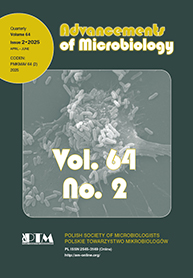Abstract: Skin, the largest organ in the human body, presents the largest possible area for colonization by microorganisms. The aspects of the interaction between microbiota and the host cannot be omitted during procedures in a beauty studio. Professional cosmetologists should consider their work’s impact on skin biodiversity and know the probable consequences. This review reviewed the current state of the art on skin microbiota with a focus on the connection between body area, microbiological biodiversity and the outcome of cooperation between the host and microorganisms. The role of the skin microbiota in maintaining the host’s homeostasis was also summarized.
Browsing tag: biodiversity
Abstract: The edaphic factors are the soil properties that affect the diversity of organisms living in the soil environment. These include soil structure, temperature, pH, and salinity. Some of them are influenced by man, but most are independent of human activity. These factors influence the species composition of soil microbial communities, but also their activity and functionality. The correlations between different abiotic factors and microbial groups described in this manuscript indicate both the complexity of the soil environment and its sensitivity to various stimuli.
1. Introduction. 2. Soil type and structure. 3. Soil pH and salinity. 4. Soil temperature. 5. Soil moisture. 6. Organic carbon and nitrogen content. 7. Heavy metals content. 8. Conclusions
Streszczenie: Czynniki edaficzne to właściwości gleby, które wpływają na różnorodność wszystkich organizmów żyjących w środowisku glebowym. Należą do nich m.in. struktura gleby, temperatura, pH, zakwaszenie i zasolenie. Na niektóre z nich człowiek ma wpływ, ale większość z nich jest niezależna od działalności człowieka. Czynniki te, wpływają na skład gatunkowy zbiorowisk mikroorganizmów glebowych, ale także na ich aktywność oraz funkcjonalność. Opisane w niniejszym manuskrypcie korelacje pomiędzy różnymi czynnikami abiotycznymi oraz grupami drobnoustrojów wskazują zarówno na złożoność środowiska glebowego, jak i jego wrażliwość na różne bodźce.
1.Wprowadzenie. 2. Typ i struktura gleby. 3. pH i zasolenie gleby. 4. Temperatura gleby. 5. Wilgotność gleby. 6. Zawartość węgla organicznego i azotu. 7. Zawartość metali ciężkich. 8. Podsumowanie.

